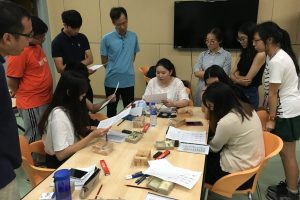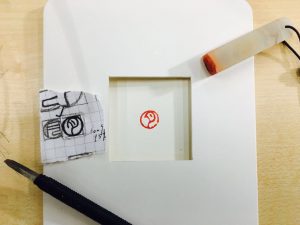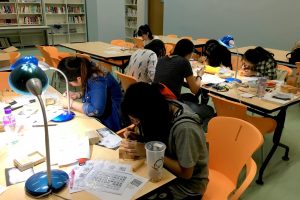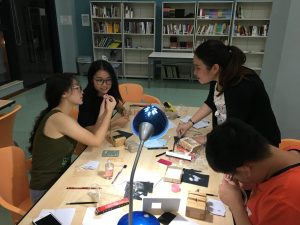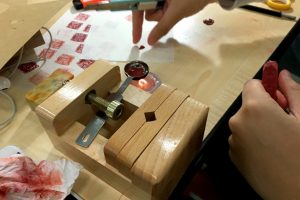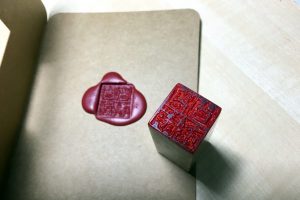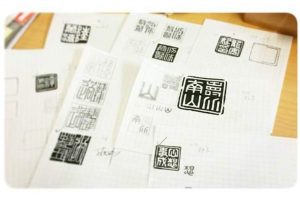Stanley Ho East Asia College (SHEAC) organises a series of seal carving workshops to introduce the traditional Chinese culture and basic techniques of seal carving. Students were taught to design and create their own seals in the classes.
The College invited Ms. Ho Weng Chi, Gigi, a Chinese calligraphy and seal carving artist, to teach two types of carving methods, respectively, the “red” seal and the “white” seal. Firstly, Gigi demonstrated the basic carving skills. After the participants decided the Chinese characters and designed the layout of their seals, the teacher guided us to copy the seal design onto the seal surface by dropping some nail polish onto a piece of paper photocopied with the seal design. Then, to create the seal is to carve out the parts without any ink copied from the scratch.
The first two sessions featured the “red” seal carving. Dipped in a red ink pad and then stamped on a white paper, the lines of the characters are printed in red. Due to more technical processes involved, Gigi chose a small seal stone for students to carve one character. Each of the seals was charmingly attached with a string so that it could become a necklace. In the third and fourth classes, students learned to create “white” seals (the characters would be shown with its background in the ink colour such as red). Since this method requires no border processing, the techniques are simpler. Participants carved three or four characters, and applied the wax seal to do the stamp, giving a fusion of Chinese and Western traditions.
Students were very careful when carving, as if a mistake is made, one will need to wear away the original layer to make the scratch and carve it all over again. During the four nights, not only did the students gain a better understanding of the traditional Chinese art through practice, but they also made unique seals of their own that can be used in the future. In addition, because of the level of focus required during carving, students also cultivated higher levels of patience and perseverance, and found a moment of serenity.
By: Communication Working Group of SHEAC House Association Li Zhidong, Wallace, Economics Year 1 (English) Sun Tuo, Tony, Mathematics Year 1 (Chinese)
通過篆刻工作坊欣賞和實踐中國傳統藝術
何鴻燊東亞書院於9月份舉辦了一系列的篆刻工作坊,活動主要介紹了中國傳統篆刻文化與基礎篆刻工藝,以及指導學員製作屬於自己的篆刻印章。
書院邀請到篆刻經驗豐富的何頴姿老師來教授兩種刻法,分別是印面文字凸起的朱文印和印面文字凹陷的白文印。老師首先為學員們示範了基礎刻刀用法。在同學們決定好用哪些漢字和設計好印章佈局後,老師便指導打草稿——就是將草稿紙複印後往影本上滴一些洗甲水,然後將玉石放在紙上,這樣就可以使墨跡印在玉石上,然後用刻刀刻掉沒有墨跡的部分。
老師首兩節課先教授朱文印,即為蘸紅色印泥覆蓋在白紙上,印文線條是紅色的,由於工驟比較多,例如朱文印在線條刻完之後,還要將多餘的印面石屑小心剔除,而白文印刻製只須將線條刻去,所以老師為同學們選了一款迷你印石配上繩子可作為頸項,製作朱文一字印,精緻優雅。而第三及四節課教授白文印,即為沾上印泥覆蓋在白紙上,印文線條呈紅底白字,因為沒有邊框處理的要求,相對章法較簡單,課堂中同學們製作三至四字的白文印,以火漆及印章嘗試製作「封泥」,給人一種融會中西方傳統的韻味。
同學們在雕刻時都小心翼翼,怕萬一刻錯了,就只能磨掉一層從頭再來。在此四個充實的晚上,大家不但通過實踐認識了中國源遠流長的藝術,收穫了自己製作並且日後可以使用的獨一無二的印章,更由於專注於方寸之間的石頭,培養了一定的耐性和恆心,或可暫時忘卻煩憂,找回一點寧靜。
何鴻燊東亞書院學生會通訊工作組 數學系一年級學生 孫拓 (中文) 經濟系一年級學生 李植棟 (英文)

